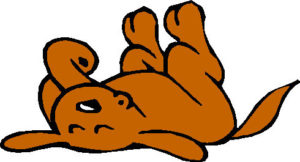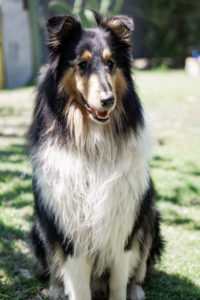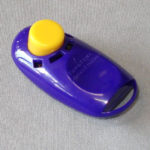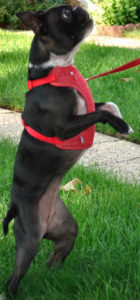Your dog’s allowed to say “No.”

“Don’t wanna. Not gonna.”
Not all the time. Not always for the same thing. But it’s okay if your dog gives you the “Not feelin’ it today!” signal.
Positive Reinforcement is equivalent to enlightened self-interest
The basis for positive reinforcement training is letting the dog learn that his/her own “enlightened self-interest” rewards being with you and doing what you ask. Fido chooses to do what you ask because he knows, through experience, that something he wants to happen will follow. It can be a toy, a treat, tummy rubs – whatever your dog loves that’s rewarding for him.
A trainer we know recently posted about her own positive reinforcement experience at a restaurant. A place she and her husband frequented fairly regularly, over the span of months, was on their “go to” list. Last time they went, the food wasn’t as good, the servers not as attentive, the entire experience was not up to par. And on the basis of that one experience, they’ve decided to find alternatives.
That’s how fast things change for us, and for our dogs. Despite months of “positive,” a single negative was all it took for them to rethink their behavior.
Let it go
So if, for whatever reason, your dog doesn’t want to play a certain game today – let it go. Switch gears and do something else. Either a different game for the same behavior, or change it up entirely. And the next time you try the rejected game, up your reward. Either choose a more valuable reward (a tennis ball instead of a tug, cheese instead of Cheerios), or increase the rate of reinforcement.
The reason doesn’t matter
You may never know why the dog didn’t want to play that game that one time. Fran’s Tango stopped wanting to play “put your toys away” the other day. He just stopped in the middle and lied down. We puzzled over it for a minute, then realized that it was a cold, humid day and he might be in pain from arthritis. On that day, Fran played a different game with him. And the next time she tried “put your toys away” she put the toy box closer to the toys and Tango enjoyed the game immensely.
Training is training – over all species
A classic book training book is “A Dog and A Dolphin” by Karen Pryor. Training is training. Over all species. If dolphins don’t want to work with their trainers, they simply swim away. There’s not a lot a land-based human can do to force a marine mammal to obey. They get their fish regardless. Dolphins play with people because they enjoy it. And our dogs should love playing training games with us, too!
The first time, let it go…
If your dog isn’t responding as you’d expect for a single training session, let it go. If the issue persists, try looking at the game differently. What is your dog seeing? What kind of response are you giving? Did you give mixed signals, or a negative reaction to something?
Some dogs are so sensitive you have to be careful. Say you’re playing a game and clicked when you didn’t mean to, or dropped a treat. Did you say “ugh!” because you were frustrated with yourself? Your dog doesn’t know you weren’t talking to her. That could be all it takes for a very soft dog. That game might be poison now, and may take lots of reinforcement to remove the stigma.
Not a big deal
But don’t make a big deal out of it – either the refusal to play or finding a reason. There are some times when, just like us, your dog’s just not that into it. It’s okay. Tomorrow’s another day.




